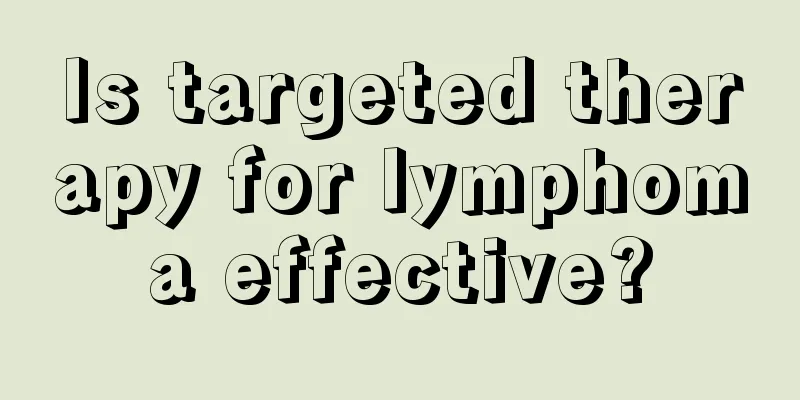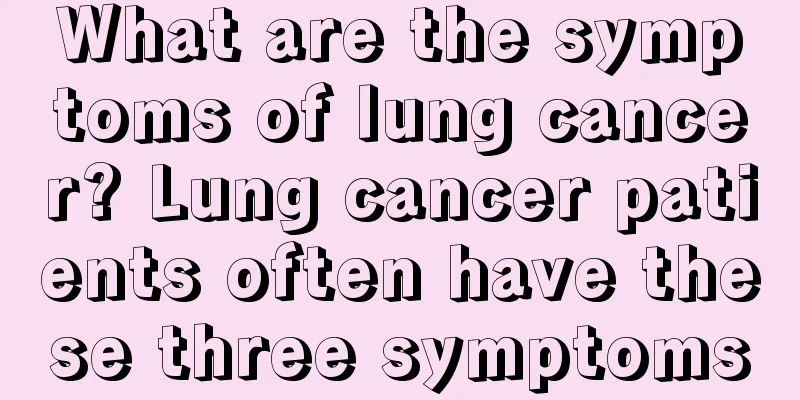Is targeted therapy for lymphoma effective?

|
Maybe you are not very familiar with lymphoma, but when you hear this name, you can imagine its seriousness, which is mainly due to everyone's fear of cancer. Malignant tumors are the most terrifying, especially those related to our immune system. They are very stubborn and difficult to cure, and everyone stays away from them. So, is targeted therapy effective for lymphoma? Are there any other methods? Lymphoma is a malignant tumor originating from the lymphatic hematopoietic system, which is mainly manifested by painless lymphadenopathy, hepatosplenomegaly, and all tissues and organs of the body may be affected, accompanied by systemic symptoms such as fever, night sweats, weight loss, and itching. Targeted therapy is to design corresponding therapeutic drugs at the cellular and molecular levels for the identified carcinogenic sites (the site can be a protein molecule inside the tumor cell or a gene fragment). When the drug enters the body, it will specifically select the carcinogenic site to combine and act, causing the tumor cell to die specifically without affecting the normal tissue cells around the tumor. Therefore, molecular targeted therapy is also called "biological missile". Our major domestic tumor treatment centers and specialized hospitals can test some targets of lymphoma, such as ER/PR, HER2 receptors, TP/DPD enzymes, etc., and carry out targeted treatment according to the test results. Such treatment is more personalized and the effect is usually satisfactory. In addition, due to the continuous emergence of new generation drugs, while effective treatment is provided, the adverse reactions to patients are also greatly improved. However, targeted therapy alone is not enough to fight lymphoma. Are there any other methods? Below I will explain to you from several aspects. 1. Chemotherapy. Chemotherapy for lymphoma is usually combined with targeted therapy drugs and biological agents. In recent years, chemotherapy regimens for lymphoma have been greatly improved, and the long-term survival of many types of lymphoma has been greatly improved. 2. Bone marrow transplantation. For patients under 60 years old, medium- and high-risk patients who can tolerate high-dose chemotherapy, autologous hematopoietic stem cell transplantation can be considered. Some young patients with relapse or bone marrow invasion can also consider allogeneic hematopoietic stem cell transplantation. 3. Surgical treatment. It is limited to biopsy or complication treatment. If there is no contraindication for hypersplenism and there is an indication for splenectomy, splenectomy can be performed to improve blood count and create favorable conditions for subsequent chemotherapy. In short, targeted therapy is effective for lymphoma, so patients can rest assured, and combining it with multiple therapies is a wise choice. |
<<: Chinese herbal medicine for treating lymphoma
>>: Lymphoma rehabilitation treatment methods
Recommend
What are the symptoms of insufficient vitality?
Yuanqi is actually defined from the perspective o...
What are the symptoms of the chin pressing on the anterior fontanelle
The fontanelle refers to the gap in the skull for...
Axillary chest pain
If you have pain on the side of your chest under ...
Treatment methods for lumbar fractures, treatment and care are the most important
In the event of a lumbar fracture, a reasonable t...
What stage of lung cancer is the lung nodule 3cm-4cm?
Lung nodules are lung nodules. Lung nodules that ...
What is erysipelas
Erysipelas is a relatively common disease, which ...
What are the more obvious symptoms of early lung cancer? Four common symptoms of early lung cancer. Things to know
Everyone knows about lung cancer in life, because...
Why does urine have a strong ammonia smell?
Normal urine is transparent and has a very light ...
It is normal to feel pain when pressing the liver area
The liver is a place where health problems freque...
What adverse reactions are common in patients with lung cancer undergoing chemotherapy? 5 dietary tips after radiotherapy for lung cancer
With the continuous improvement of medical techno...
Who should not wear peach kernel bracelets
Many men and women in urban life have the habit o...
What is the postoperative care method for rectal cancer
Experts say: Since the intestines are closely rel...
What are the advantages and disadvantages of facial scraping
Gua Sha is actually a very good way to detoxify, ...
Symptoms of pufferfish poisoning: hallucinations
For those who like to eat puffer fish, they must ...
The difference between ct and color Doppler ultrasound
CT and color ultrasound are both common examinati...









